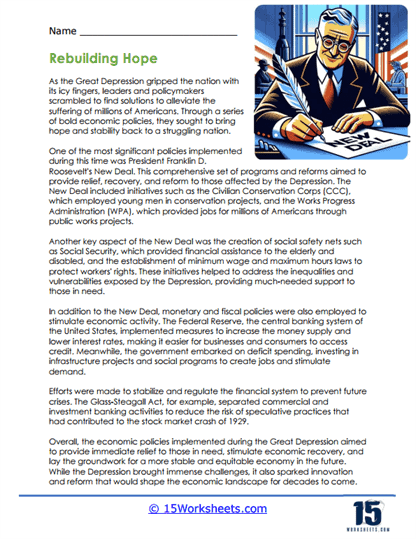Blueprint for Recovery

Worksheet Description
This worksheet provides an in-depth look at the New Deal, the series of programs and policies implemented by President Franklin D. Roosevelt in response to the Great Depression. It covers the economic, social, and environmental strategies that were developed to stabilize the economy, provide relief to millions of Americans, and prevent future financial crises. Key elements such as the Social Security Act, the establishment of minimum wage and maximum hours, and the creation of job opportunities through projects like the Civilian Conservation Corps and the Works Progress Administration are highlighted. The worksheet also explains the impact of these programs on American society and the economy during the 1930s.
The educational goal of this worksheet is to teach students about the comprehensive scope of the New Deal and its objectives to rebuild hope and stability in a nation struggling with severe economic depression. It aims to show how government intervention can facilitate economic recovery and support societal welfare. Students will learn about the rationale behind various New Deal policies, how they were implemented, and their long-term effects on the American economic landscape. Additionally, the worksheet encourages students to critically analyze the successes and limitations of the New Deal in shaping modern economic policy.
